
A Decade of Letterpress: Jules Remedios Faye
December 17, 2020
Each year, in a project led by Sierra Nelson and Ann Teplick of Writers in the Schools, and the School of Visual Concepts, long-term patients from Seattle Children’s Hospital and a team of letterpress artists join forces to create an extraordinary collection of handprinted, limited-edition broadsides. In 2020, the Letterpress Program at the School of Visual Concepts became a new organization, Partners in Print, in order to maintain meaningful community collaborations like this one.
These works of art—which you may have oohed and aahed over at the SAL info table at in-person events or seen at local libraries or galleries as they toured around Seattle—are always colorful, fantastical, and deeply felt.
To celebrate a decade of this letterpress project, we’ve asked artists behind the press to give us an inside look at the process of turning youth poetry into art in a series of retrospectives on some of their favorite pieces over the years. Below, Jules Remedios Faye talks us through that process, focusing on “A Brush with Death,” a 2015 broadside created using a poem by Maya Arriaga (then age 16). This winter solstice, while the longest night of the year is upon us, this poem reminds us there is still hope for something different.
How many years have you participated in the project?
I’ve been involved every year except the very first year. I eagerly look forward every spring to participate again in this annual gathering of hearts.
What drew you to the poem you worked with?
Although many of my fellow printers select a poem in advance, I love taking whichever poem has not been chosen at the end of the selection process. I’m inspired by the challenge of working with whatever I’m given—because inevitably I fall in love with both the poem and the poet.
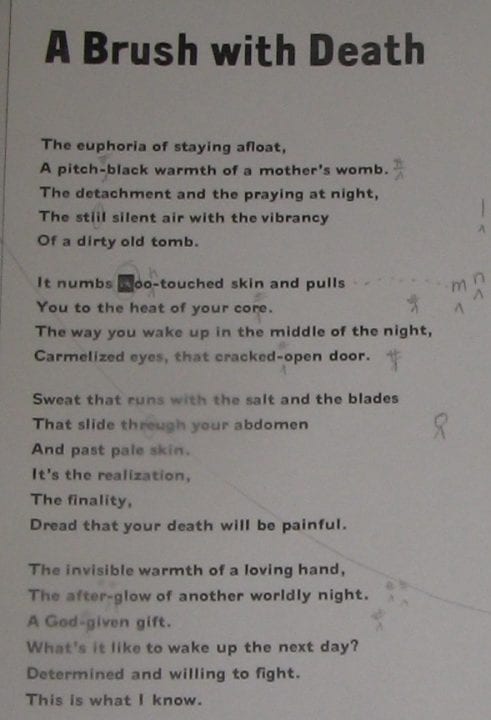
Where did you find your inspiration?
I drew inspiration from the power, courage, and raw honesty of the poet’s voice. I was deeply moved by her capacity to express the truth of profound suffering, what it means to enter the dark, and at the same time express her victory back into the light, how the poem ends resting in the afterglow of her own love of life.
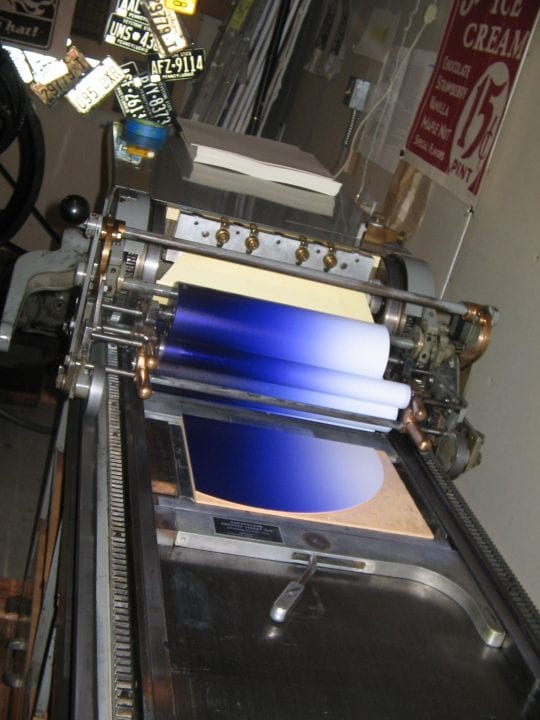
What’s the process like to turn a poem into a broadside?
The poet’s reference to the womb as well as the tomb both felt like places of reverence—places of mystery where unimaginable transformation occurs. Both birth and death are often accompanied by profound suffering and extraordinary love.
I wanted to honor the sacredness of both the darkness and the emerging beauty in this poem. And in spite of the deep fracturing pain described so vividly, the poet comes through whole and intact.
I thought the power and boldness of her words should be set in a bold, unadorned typeface. And that the clear, spare, stark truth of the poem was best served with lots of open space around a spare design.
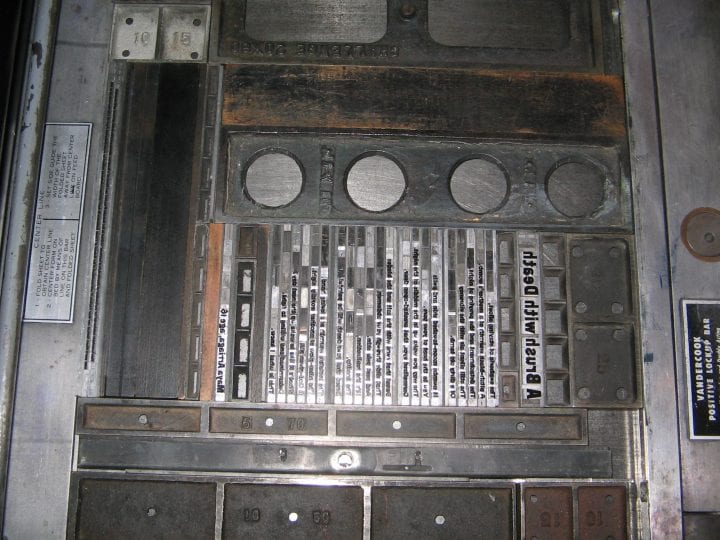
Taking all of this into careful consideration, I began to envision a planet-like sphere. This symbolizes wholeness, birth, death, completion, cyclical movement, dawn, and dusk. Purple is a color of royalty—which matches the dignity and poise of the poet’s voice. It is also a mixture of cool blue and warm red, and represents an almost alchemical fusion of opposites. The fade from pure white to deep purple seemed to capture the ever ongoing dance of dark turning into light, of seasons, times of grief as well as times of celebration and joy.
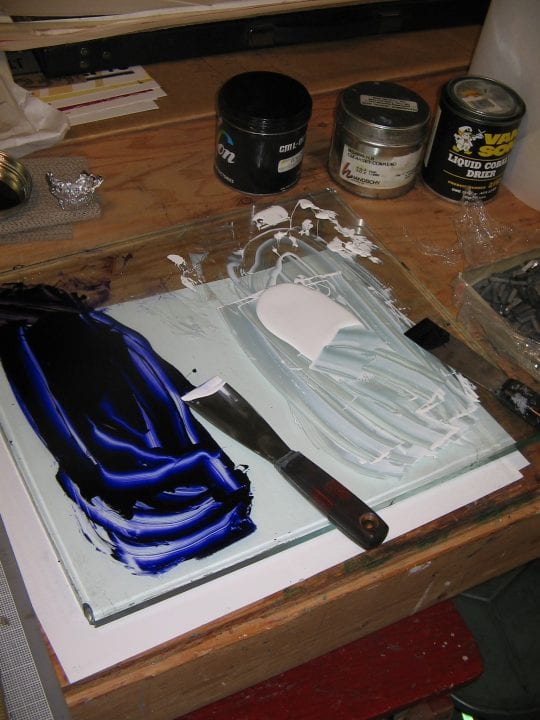
Making the sphere “bleed” off the edges of the sheet helps create the sense of influences that are bigger than us. And yet, her poem, her voice stands bold and steady in its own right.
What’s your favorite part of the project as a whole?
My favorite thing about this project is getting to bring a young poet’s voice so powerfully into the world. I love that these broadsides are seen by others, that our collaborative work inspires and moves those who see it—on Seattle Children’s Hospital walls, at Seattle libraries, at SAL events. Getting to collaborate with these young artists is such a privilege. It’s one of the most meaningful projects I participate in. Although we don’t always get to meet our poet, due to medical circumstances—the thing is, whether I meet them or not, every poet I’ve worked with has profoundly enriched my life.
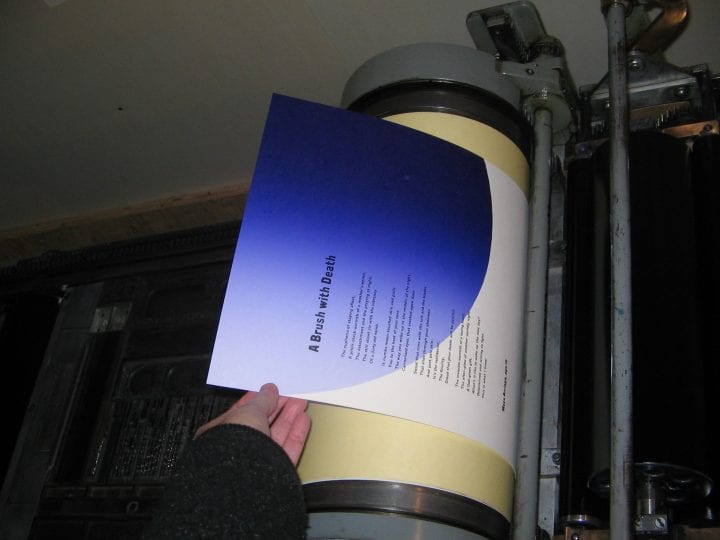
Thank you, Jules!